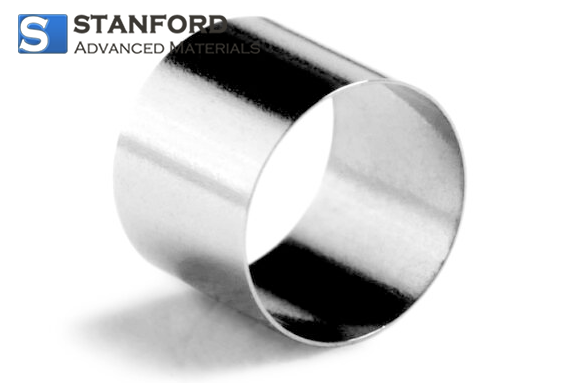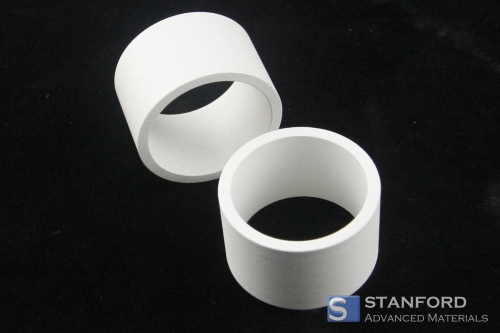Tantalum or Platinum-Iridium: Marker Band Selection
Introduction
Marker bands play a crucial role in medical devices, particularly in the fields of interventional cardiology and radiology. These bands are used to enhance the visibility and tracking of devices within the body during medical procedures. Among the various materials available for marker bands, two prominent choices are Tantalum and Platinum-Iridium.
In this comprehensive guide, we will explore the characteristics, advantages, and considerations of Tantalum and Platinum-Iridium marker bands. Hope that you can find the perfect product for your business or research.
Tantalum Marker Bands
Tantalum is a rare, dense metal with excellent radiopacity. These properties make Tantalum an attractive choice for marker bands in medical devices.
.png)
Figure 1. Tantalum Marker Bands
Advantages of Tantalum Marker Bands:
1. Density:
The high density of Tantalum ensures good visibility under fluoroscopy. Thus, physicians can precisely track the movement and placement of medical devices within the body.
2. Biocompatibility:
A variety of papers offer an overview of the extensive use of tantalum marker bands. The applications of tantalum in treating femoral head necrosis, joint prostheses, and bone defect repairs are explored. [1]
3. Corrosion Resistance:
These papers delve into the mechanisms underlying these applications. They also highlight Ta’s corrosion resistance, ductility, and osteointegration properties. The excellent corrosion resistance ensures the longevity and reliability of Ta marker bands during extended use within the body.
Related reading: The Versatility of Tantalum Marker Bands: Applications And Benefits
Considerations for Tantalum Marker Bands:
1. Cost:
Tantalum is a relatively expensive material. Its relatively high cost may impact the overall cost of manufacturing medical devices. Considerations should be made regarding the budget constraints of the project.
2. Machinability:
Ta can be challenging to machine. This material potentially increases manufacturing complexity and costs. Engineers should evaluate the feasibility of processing Tantalum for specific device designs.
Platinum-Iridium Marker Bands
Platinum-Iridium is a dense and corrosion-resistant alloy. It has been widely used in medical applications for many years. This device is notable for its durability and stability. It has become a suitable choice for marker bands in various medical devices.

Figure 2. Platinum-Iridium Marker Bands
Advantages of Platinum-Iridium Marker Bands:
1. Density:
Similar to Tantalum, Platinum-Iridium offers high radiopacity. This feature ensures clear visibility under X-ray imaging. This characteristic is crucial for precise medical device placement.
2. Durability:
Platinum-Iridium is highly durable and resistant to corrosion. So, it is suited for long-term use within the human body. This durability contributes to the reliability of medical devices over time.
3. Cost Evaluation:
While Platinum-Iridium may seem more cost-effective, it is also important to consider the manufacturing expenses and machining and processing.
l As of February 2020, the raw material cost of platinum-iridium alloy developing rings is around 35 dollars/gram. Despite the use of pricey metals, marker bands usually have a small size and thin wall thickness. These properties result in a low raw material cost of about 0.25 dollars per ring.
l In contrast, non-noble metal-developing rings, like tantalum-developing rings, do not exhibit a substantial cost advantage.
Considerations for Platinum-Iridium Marker Bands:
1. Biocompatibility:
While Platinum-Iridium is generally considered biocompatible, individual patient responses may vary. Careful consideration and testing are required to ensure minimal risk of adverse reactions.
2. Machine Challenges:
l Platinum-iridium alloy comes with a high elastic modulus and Poisson's ratio. So, it exhibits a significant work hardening rate.
l Increased iridium content can hinder processing performance. These features pose challenges to micro-tube processing technology. In-depth research is ongoing on the cutting and inner surface treatment of the alloy ring.
Choosing the Right Marker Bands:
l Medical Device Application: The choice between Tantalum and Platinum-Iridium should be influenced by the specific application of the medical device. Consider factors such as the duration of device placement, the complexity of the procedure, and the budget constraints.
l Material Properties: Evaluate the key material properties of each option, including radiopacity and machinability, in the context of the intended medical use.
l Regulatory Compliance: Ensure that the selected material complies with relevant regulatory standards and guidelines for medical devices.
Additionally, a comparative analysis in the following table highlights the benefits and challenges associated with the Tantalum and Platinum-Iridium marker bands. Hope that it aids in a clearer understanding of their respective characteristics.
Table 1. Tantalum vs Platinum-Iridium Marker Bands
|
|
Benefits |
Challenges |
|
Tantalum Marker Bands |
Density and Radiopacity; Biocompatibility; Corrosion Resistance; |
Cost; Machinability; |
|
Platinum Marker Bands |
Density and Radiopacity; Durability; Cost; |
Biocompatibility; Machinability; |
Conclusion:
The selection of marker bands is a critical aspect of designing medical devices for interventional procedures. Both Tantalum and Platinum-Iridium offer unique advantages. The choice between them depends on the specific requirements of the application.
Careful consideration of factors such as biocompatibility, radiopacity, durability, and cost will contribute to the successful integration of marker bands. These devices ultimately enhance the efficacy and safety of medical interventions.
Stanford Advanced Materials (SAM) stands as a reliable and experienced manufacturer and supplier of premium Tantalum and Platinum-Iridium marker bands. Our Tantalum and Platinum-Iridium marker bands are crafted with precision and adhere to the highest industry standards.
Understanding the unique requirements of medical devices, SAM offers customizable solutions to meet specific needs. Whether it's adjusting dimensions, modifying compositions, or tailoring other properties, our team is dedicated to aligning precisely with the individualized specifications of our clients. Contact us today to explore our high-quality marker bands.
Reference:
[1] SHI Xiaoxiu, WU Xianzhe, MA Xingshuang, LIU Yang, HE Peng, LUO Yanfeng. Biomedical applications of tantalum-based materials and the underlying mechanisms. Journal of Functional Materials. 2019, 50(12): 12001-12006 https://doi.org/10.3969/j.issn.1001-9731.2019.12.001








